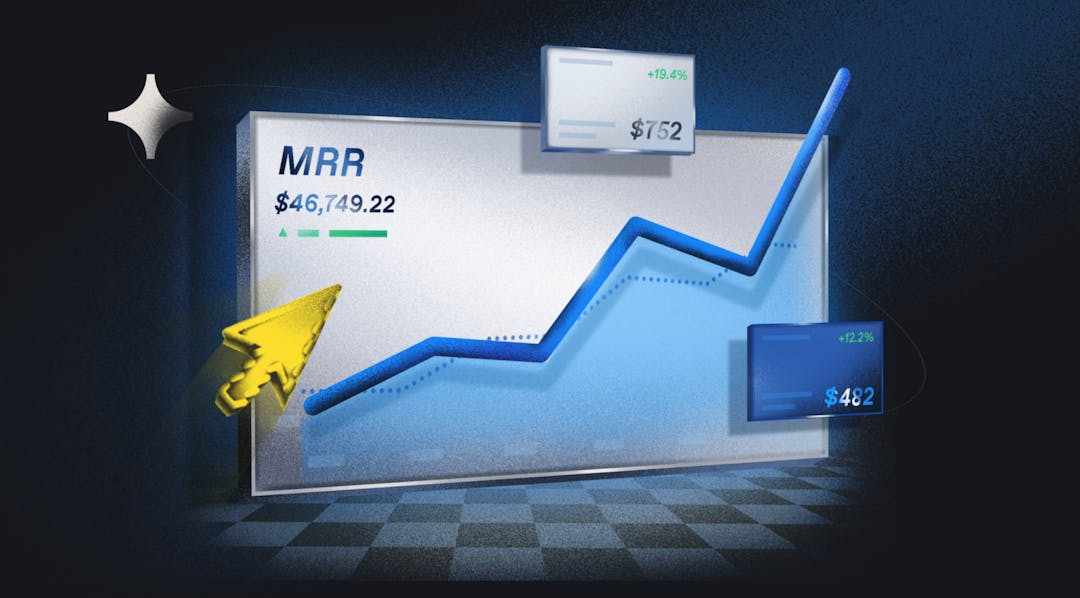Every business needs better leads. Hailey Friedman, co-founder of GrowthMarketingPro.com, explains why content is important for subscription-based businesses.
Lead generation is the lifeblood of any company. It’s especially important for subscription-based businesses. Every new lead carries the potential for recurring revenue. As a business owner, one of your perpetual goals is to keep generating new and better leads.
What’s the best way to do this? With content. But not just any content—content that is designed for customers in your niche.
The best thing about content is that there are multiple channels and various forms you can work with. Each offers different benefits to different types of businesses.
In this article, you’ll learn about the four most effective types of content for a subscription-based business. Using these strategies, you’ll generate a steady flow of high-quality leads in no time.

Why is content important for SaaS and subscription-based businesses?
The number one reason why content is an effective way to generate leads is simple: Content reaches a wide audience, educates people, and engages your prospective customers. Here are some of the other ways that content can benefit a subscription-based business:
Increased brand awareness
Increasing your organic footprint means more people are seeing your brand online. The more times and more people see your brand, the more trust you build with your community and prospective customer base.
More business opportunities
When you’re producing great content—for lead generation, brand awareness, or alternate goals—other companies in your industry are going to notice you. This can lead to lucrative partnerships and co-branding marketing opportunities, like webinars, speaking engagements, and guest blog posts.
Learn what resonates
When you’re consistently generating new content, you’re always getting feedback about who is reading your content, and what types of content perform the best. With that information, you can spend more time producing content that performs well, and less time creating content that isn’t as popular.
The 4 best content types for better lead generation
Whether you’re new to content, or have a robust content marketing strategy in place, using the right types of content for lead generation is important. Not all content is created equal, so to fill your pipeline with qualified leads, here are the four types of content you should focus on and what to focus on for each.
1. SEO content for organic traffic
SEO, which stands for search engine optimization, is an integral part of any lead generation content strategy. It’s not a form of content, but it’s a tactic that you should be using in your writing.
SEO is how you get your web pages to rank higher on Google and other search engines. Google’s algorithm uses a set of signals to decide where a piece of content ranks on the SERP (search engine results page).
The best way to improve your rankings is to include relevant keywords throughout your content—blog posts, landing pages, product pages, and so on. These keywords should be specific to your business, and not too general. There are some powerful content marketing platforms that can help make this process easier.
For instance, a subscription-based business that sells activewear could use keywords such as, “leggings subscription box,” or “get new activewear every month.” Those are keywords that are searchable, but aren’t too competitive.
It can take time to see results from SEO. But once you build up a steady stream of organic traffic, the visitors coming to your website will be qualified. They know what they're looking for, and they have some interest and need for what you are selling.
Besides your traditional content, be sure to use your keywords in the title tags, metadata and image alt tags. It’s also a good idea to strategically weave your keywords into blog post titles, headers, and image captions.
By making SEO a priority, your content can start to rank higher in the search results, which will generate more quality leads. These SEO software tools can help you get started with your keyword research.
2. Social media content
A social media content strategy is a must for subscription-based businesses. Not only does social media allow you to engage with current customers, but it’s also a great way to find new leads. Here are the top social media platforms you should be using for lead generation:
Facebook and/or Instagram
Facebook acquired Instagram in 2012. Together these two social media platforms have around 3.5 billion users.
It’s safe to say that your target customers are using these platforms, especially if you're a B2C company. It’s just a case of formulating the right content strategy to reach them.
It’s almost become a necessity for businesses to have a Facebook or Instagram page. This makes it easy for your customers to find you and enables you to interact with them directly.
To generate leads on Facebook and Instagram, however, you’ll almost certainly need to use paid advertising. The two main forms of ads on these platforms are display ads and sponsored stories.
Stories are short videos that disappear after 24 hours. They perform better than display ads but aren’t suited to all business models. Your best bet is to run an ad campaign for both types of ads, measure their performance, and figure out what works best for your business.
Twitter has more than 300 million monthly active users. It’s a direct and instant way to reach your target audience and generate leads.
It’s difficult to build up an organic following of warm leads, though. You’re better off testing paid ads on this platform.
Twitter weaves ads between Tweets on accounts that are relevant to your business. It’s a fast way to get your brand in front of the right people, and is certainly worth allocating some ad spend to.
Pinterest is different from the other social media platforms as it’s a very visual platform. If your subscription goods are eye-catching, this is the platform to showcase them.
On Pinterest, you “pin” images of your products to a board. A board is a collection of other relevant images, probably other product shots.
This platform also runs on an algorithm. So, the more content you upload and the better optimized it is, the more visitors and leads you can generate.
The best thing about Pinterest is that it’s relatively quick to post to. You do need to add some content to your pins as users type in keywords to find what they’re looking for. But ultimately, it’s the quality of your images that’ll be generating leads.
Billie, a subscription-based shaving company, is a great example of a brand with a strong presence on Pinterest.
Their content is on-brand, organized into relevant boards, and tailored to the platform. They even use video content (which I’ll touch on later).
As you can see, it’s working for them—Billie’s Pinterest account garners 10 million monthly views. That’s a lot of potential leads!
TikTok
A platform that initially started off for short and funny videos, has emerged as a mainstream social media platform now being adopted by brands. And they’re seeing results.
If you’re trying to reach a younger demographic, you can get a significantly higher organic reach on TikTok vs. other legacy platforms like Facebook/Instagram/Twitter. It’s ranked sixth in the world for consumer spending, and is the sixth most popular social media network.
TikTok gives you the opportunity to reach a new/younger, and very digitally savvy audience at a lower cost—but you have to do it well.
This leads us to our third type of content that also requires quality.
3. Video content
Video content is one of the most consumable forms of content. In the age of smartphones, a lot of internet browsers would rather watch a short video than scroll through pages of text.
This ties into a couple of the other forms of content I’ve already mentioned, as well. If you’re producing ads for social media, you can repurpose this content, edit it using a video maker and use it to build up a YouTube channel, for TikTok, or index it on your blog.
Video content also goes hand-in-hand with case studies and customer testimonials. A short clip showcasing your products, or a video of a customer explaining how your product solved a pain point, will hit a section of your audience that you wouldn’t otherwise have found.
Stats back this up too. Ninety-seven percent of marketers claim that video helps customers understand their products. And, looking to the future, it’s estimated that more than 80% of all traffic will consist of video by 2021.
Additionally, video consumers have a 12%-28% higher willingness to pay, indicating that media is great for nurturing a prospect or customer. But again, you have to do it well because this will directly impact your brand.
Final thoughts…
There are so many options for lead generation content that will help you expand your sales pipeline. If you're just getting started with content, it can be overwhelming initially.
To make things easier, pick a few forms of content to kick off with. Overtime, you’ll learn what works and what doesn’t. Keep track of performance metrics on your content and determine which channels are generating the most leads.
By generating new content consistently, you’ll attract more of the right kinds of leads, and improve your conversion rate.



